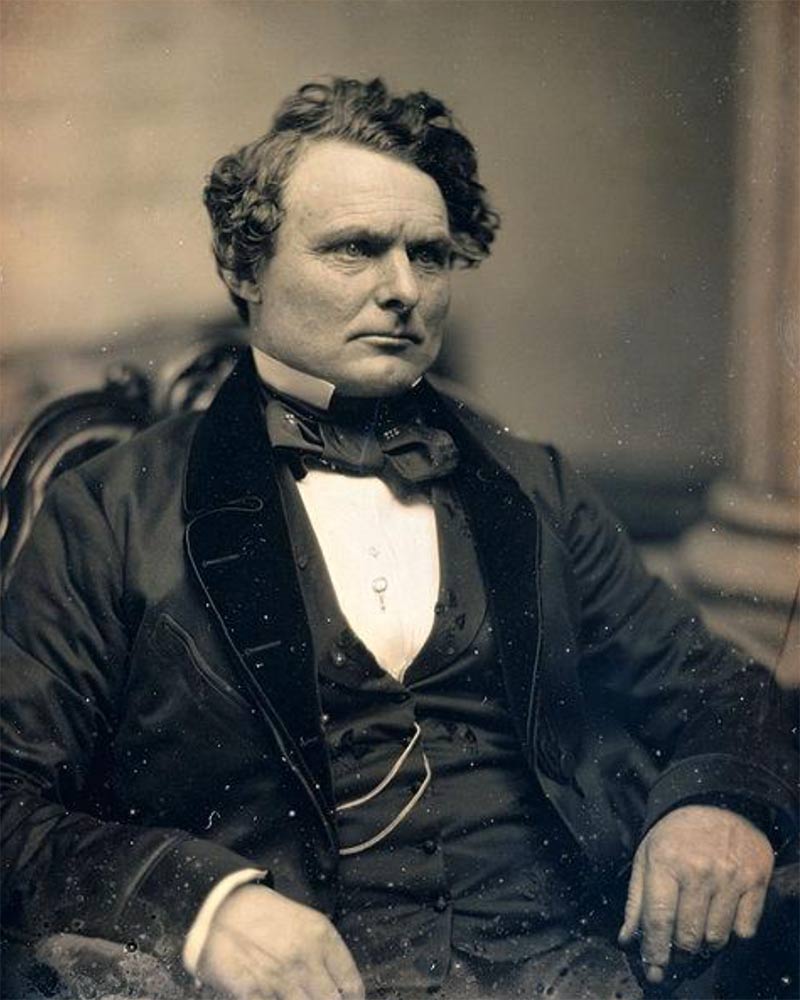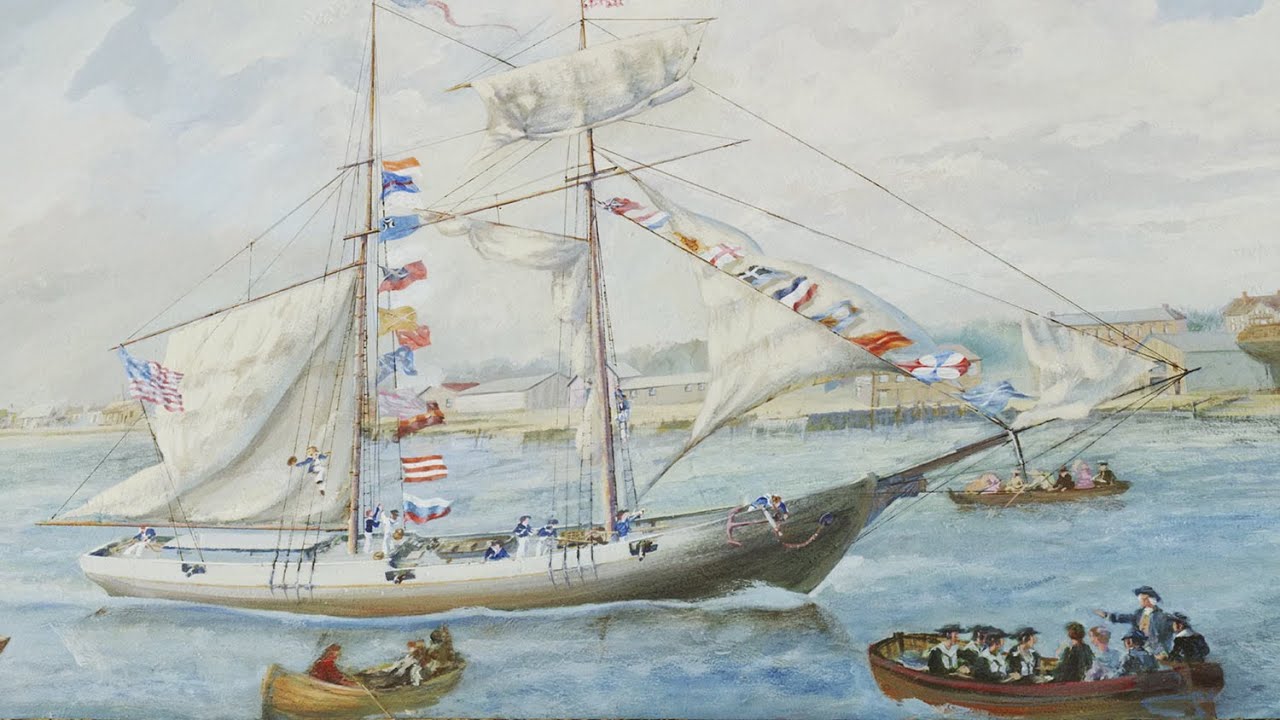Shipbuilder Donald McKay
His packet ship Courier [380 tons] was the first ship fully designed and built by Donald McKay himself, in 1842. The speed and durability of this one ship gave great notoriety to the young shipbuilder, and word spread fast that he had a new, ‘incredibly fast’ design that could produce a reliable product. In 1843 McKay, now working at the McKay & Picket shipyard, built the packet ships St. George [845 tons], John R. Skiddy, [930 tons] and Joshua Bates, [620 tons].

Photographer – Southworth & Hawes, Boston
c. 1850-1855
Public domain use.
McKay moved to East Boston in 1844 and established his own shipyard. From 1845 to 1869 he would build some of the finest ships to ever sail. Thirteen “extreme clipper” ships were constructed between 1850 and 1854, including: Flying Cloud, which made the voyage from New York City to San Francisco in a record 89 days; Lightning , which established a long-standing world record of 436 nautical miles in a day, at times reaching a speed of 21 knots; and the massive Great Republic, with four masts, registered at 4,555 tons, which was the largest clipper ever built.
Plan Your Visit
Plan Your Visit
- Museum Hours
Sunday: 12 pm - 5 pm
Closed Monday
- Tickets
$8 admission for adults
Free for NBPT residents, kids under 12, and museum members
Cost of admission includes access to the Discovery Center.
- Parking
City parking is available adjacent to the museum. View parking lot directions.

250th Anniversary - American Revolutionary War Newburyport
